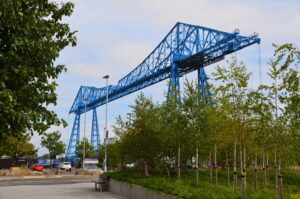Antarctica could be melting faster than expected, says scientists
Ice shelves in Antarctica could be melting at an accelerated rate, causing sea levels to rise more rapidly, according to scientists.
Researchers from Caltech and NASA’s Jet Propulsion Laboratory have developed a new model which simulates how rapidly flowing freshwater from melting ice can trap dense warm ocean water, causing more ice to melt.
Ice shelves are several hundred metres thick and act as a protective buffer for mainland ice, preventing whole ice sheets from flowing into the ocean.
But the climate crisis is causing oceans and the atmosphere to warm, meaning these ice shelves are melting, threatening their ability to prevent ice sheets from falling into the ocean.

‘If this mechanism that we’ve been studying is active in the real world, it may mean that ice shelf melt rates are 20% to 40% higher than the predictions in global climate models, which typically cannot simulate these strong currents near the Antarctic coast,’ said Andy Thompson, who’s Professor of Science and Engineering, who’s laboratory was used for the study.
Researchers focused on the West Antarctic Peninsula (WAP), which protrudes into lower, warmer latitudes and sees the most dramatic changes due to the climate crisis.
The model also accounts for the narrow Antarctic Coastal Current which runs counter clockwise around the continent, which is often overlooked.
‘Large global climate models don’t include this coastal current, because it’s very narrow—only about 20 kilometers wide, while most climate models only capture currents that are 100 kilometers across or larger,’ explained Mar Flexas, senior researchers and leader of the study. ‘So, there is a potential for those models to not represent future melt rates very accurately.’
The study shows how freshwater from melted ice at the WAP is carried by the current around the continent, trapping warm ocean saltwater under the ice shelves and causing them to melt from below.
This means increased melting at the WAP can lead to escalated melting at the West Antarctic ice shelves thousands of kilometres away, partly explaining why West Antarctic ice shelves have been melting at an accelerated rate.
‘There are aspects of the climate system that we are still discovering,’ Thompson says. ‘As we’ve made progress in our ability to model interactions between the ocean, ice shelves, and atmosphere, we’re able to make more accurate predictions with better constraints on uncertainty. We may need to revisit some of the predictions of sea level rise in the next decades or century—that’s work that we’ll do going forward.’
Image courtesy of Andy Thompson















